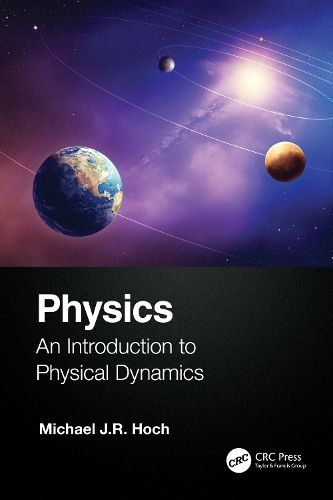Readings Newsletter
Become a Readings Member to make your shopping experience even easier.
Sign in or sign up for free!
You’re not far away from qualifying for FREE standard shipping within Australia
You’ve qualified for FREE standard shipping within Australia
The cart is loading…






Physics: An Introduction to Physical Dynamics provides an accessible introduction to the fundamentals of physics for science and engineering undergraduates who are studying elementary physics.
This textbook contains 12 chapters with accompanying problem sets and explains the dynamical properties of a variety of physical systems. The first six chapters intro- duce Newton's laws of motion, followed by the concepts of mechanical work and mechanical energy, with illustrative applications to the translational and/or rotational motion of inflexible objects such as particles and 3D objects of fixed shape. The next four chapters generalize the application of Newton's laws and mechanical energy to flexible systems, including flowing fluids, waves on strings, and oscillating springs. The last two chapters elucidate the laws of thermodynamics, especially heat energy transfer between systems at different temperatures.
Some familiarity with topics in elementary mathematics, including calculus, is assumed. A wide variety of situations are explored, by means of which a student should acquire an enhanced understanding of the properties of physical systems from the astronomic scale to the microscopic.
Key Features
Covers the classical mechanics of both single particles and assemblies of particles subject to forces Contains wide-ranging sets of examples and worked problems Covers much of the material that a student might expect to encounter during the first year of a university physics course
$9.00 standard shipping within Australia
FREE standard shipping within Australia for orders over $100.00
Express & International shipping calculated at checkout
Physics: An Introduction to Physical Dynamics provides an accessible introduction to the fundamentals of physics for science and engineering undergraduates who are studying elementary physics.
This textbook contains 12 chapters with accompanying problem sets and explains the dynamical properties of a variety of physical systems. The first six chapters intro- duce Newton's laws of motion, followed by the concepts of mechanical work and mechanical energy, with illustrative applications to the translational and/or rotational motion of inflexible objects such as particles and 3D objects of fixed shape. The next four chapters generalize the application of Newton's laws and mechanical energy to flexible systems, including flowing fluids, waves on strings, and oscillating springs. The last two chapters elucidate the laws of thermodynamics, especially heat energy transfer between systems at different temperatures.
Some familiarity with topics in elementary mathematics, including calculus, is assumed. A wide variety of situations are explored, by means of which a student should acquire an enhanced understanding of the properties of physical systems from the astronomic scale to the microscopic.
Key Features
Covers the classical mechanics of both single particles and assemblies of particles subject to forces Contains wide-ranging sets of examples and worked problems Covers much of the material that a student might expect to encounter during the first year of a university physics course